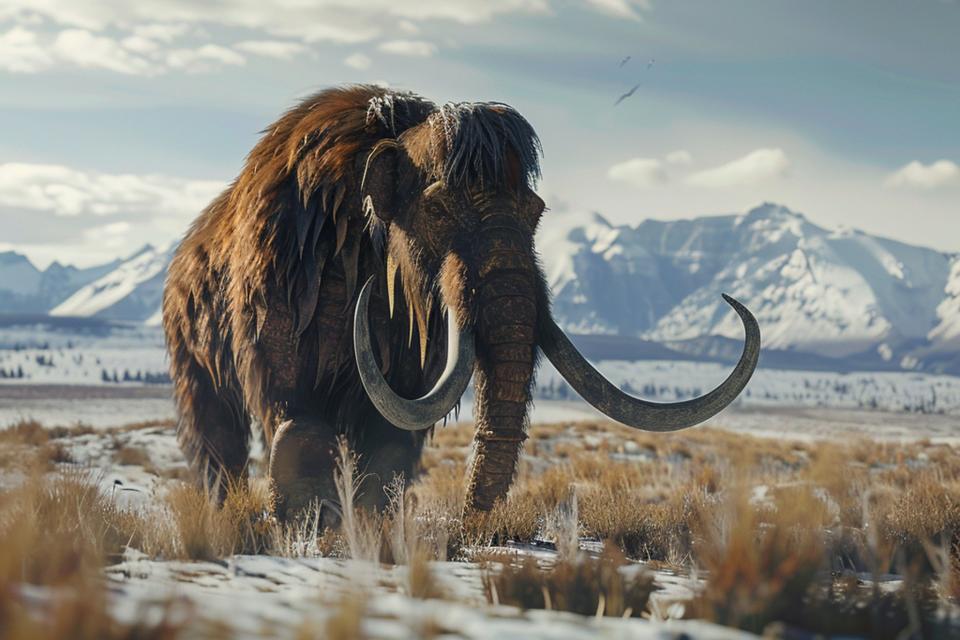Colossal Biosciences has made headlines as the de-extinction startup primed to bring back the woolly mammoth. Here’s how the business model actually works.

Remember InGen, the company at the center of Jurassic Park?
InGen, short for International Genetic Technologies, had a seemingly insane business plan that goes something like this: Bring the Tyrannosaurus rex back from the dead, have an amazing theme park, and rule the world.
Never mind that theme park economics are tough, even before you add previously-extinct creatures into the mix. Never mind this theme park is truly in the middle of nowhere. And never mind that it’s incredibly unclear what the best-case scenario margins could possibly be.
Am I being facetious? Of course, I know Jurassic Park’s economics are beside the point. But it does raise a question: As advances in technology make the once science fiction idea of “de-extinction” closer to becoming a reality, what does it actually mean for a de-extinction company to be a real business?
That’s what I sat down to talk to Colossal Biosciences CEO and founder Ben Lamm about. Colossal has made headlines pursuing the de-extinction of the woolly mammoth, the Tasmanian tiger, and the dodo. The company’s raised more than $225 million to date, and its backers include USIT, Bold Capital Partners, Breyer Capital, Bob Nelsen, At One Ventures, and more.
"We’re currently on track for our mammoth calves in 2028,” Lamm told me on a video call recently. “Nothing is ahead of schedule, but nothing's behind.”
And yes, I’m like everyone else, and am obsessed with the idea of seeing a woolly mammoth. But what I really wanted to know was this: How do you make money doing it? Thankfully, the answer’s not the woolly mammoth meatball—that’s a project cooked up by a different company focused on lab-grown meat. Colossal’s mammoth monetization model emphasizes two near-to-medium term efforts, and a longer-term play. Let’s start with the near-term:
“There’s consumer education, where we already get billions of media impressions,” said Lamm. “We’re doing a docuseries, and we do lots of different educational content. Transparently, those do make money…Then, the midterm is the technology companies that we spin out, as we monetize, but those take a while to get to the point where they’re successful.”
These aren’t fantasies, they’re already happening. For one, filmmaker James Reed, noted for Oscar winner My Octopus Teacher, was revealed in February to be making a docuseries about Colossal, devoting And of the earliest spinouts is Form Bio, a computational life sciences platform built at Colossal and spun out in 2022, raising a $30 million Series A led by Jazz Venture Partners (also a Colossal investor).
Then there’s the longer-term strategy, which is tied to Colossal’s already-extensive conservation efforts.
“De-extinction and species preservation are connected,” said Lamm. “Sometimes people want to separate out species preservation, conservation, and I say, no, they’re all one thing.”
Colossal’s conservation efforts are wide-ranging. For example, the startup is currently working with the University of Alaska and University of Stockholm on one of the largest-ever studies focused on radiocarbon dating mammoths. Likewise, Colossal last year joined the BioRescue group working to save the northern white rhino from extinction. And, there’s the Victorian grassland earless dragon—a miniscule Australian lizard believed to be extinct in 1969. The lizard was recently rediscovered in the wild, and Colossal’s set up a breeding and release colony with the Melbourne Zoo devoted to the fetching little reptile.
Lamm even envisions getting a piece of the carbon credit market, which is projected to be as big as $2.4 trillion by 2027, according to some estimates. “In the long-term, if we get to sustainable populations of, say, the Thylacine [Tasmanian tiger] in southern Australia, we’ll get government subsidies, carbon credits, biodiversity credits.”
Lamm is no dodo and fully realizes that to many ears this all still seems far-fetched—but he isn’t worried about it. “We have a view that it's not our job to persuade: It's our job to educate and be transparent,” he said.
Some of Colossal’s critics have even switched gears and joined the company. Take Colossal’s new Chief Science Officer Beth Shapiro, a famed evolutionary molecular biologist who originally wanted to see Colossal publishing more scientific papers and doing deeper research on what the ecological impacts of rewilding mammoths would be like (a first study is now in peer review). This year, Shapiro took a leave of absence from UC Santa Cruz to join Colossal.
“I’m not worried about it not working,” said Lamm. “Of all the things that keep me up at night, that’s not one.”
Asking Andy…In this week’s edition of Ask Andy, Bonobos cofounder Andy Dunn tackles a question about how to retain a company’s culture in a remote work era with characteristic candor: “I think for some startups, particularly if they are pre-product-market fit, we can and should reconsider the in-office model. Not three days a week. Five days a week.” Read the whole column here.
See you tomorrow,
Allie Garfinkle
Twitter: @agarfinks
Email: alexandra.garfinkle@fortune.com
Submit a deal for the Term Sheet newsletter here.
Joe Abrams curated the deals section of today's newsletter.
This story was originally featured on Fortune.com

 Yahoo Finance
Yahoo Finance 